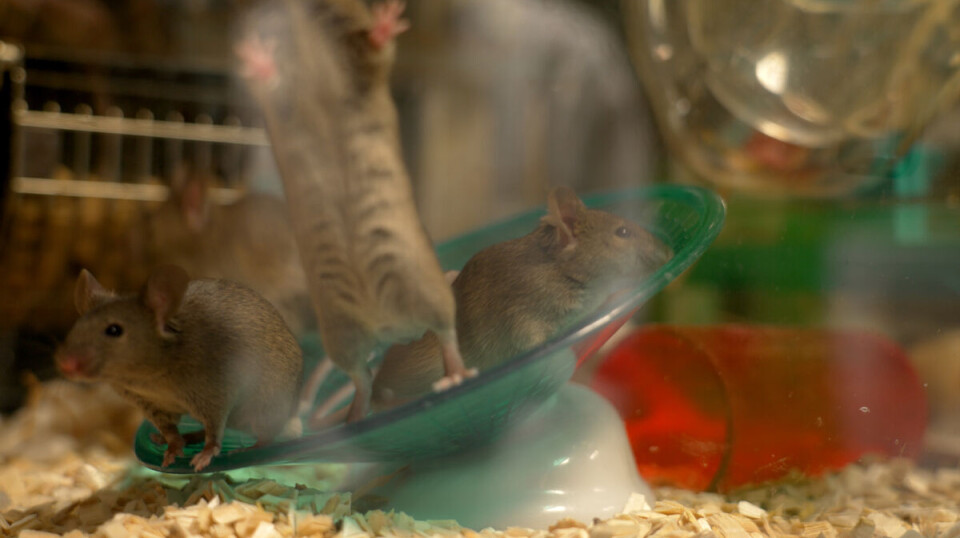THIS CONTENT IS BROUGHT TO YOU BY THE University of Agder - read more

Researchers will use mice's sense of smell to gain insights into how the brain learns
Brain researchers hope that the sense of smell can reveal more about how the brain organises information.
“The sense of smell can give us basic insights into how the brain learns and organises information about the world around us,” says Hanne Stensola.
She is a neuroscientist at the University of Agder (UiA).
Together with her partner and colleague Tor Stensola, she is particularly busy these days.
They have 34 small mice who are getting used to their new home. Each one will be given a name, fed, and cared for until they become accustomed to their surroundings at UiA's new neuroscience lab.

The mice will be going to mouse school
The mice are not only acclimating to their new environment. They need to thrive and be fit. Eventually, they will be going to mouse school, where they will learn various tasks to keep them mentally sharp and in good spirits.
“These mice are among our most important research partners. To find out how their brains work, we need healthy mice, which is why we take good care of them. At mouse school, they will become accustomed to us and to performing various tasks,” Hanne Stensola says.
The goal is robust and relaxed mice. Eventually, they will have tiny electrodes attached to them and contribute to new knowledge about the brain.
The mice's first task will be to smell new things.
By studying the sense of smell, the Stensolas will provide us with fresh insights into how the brain learns and organises knowledge.
The sense of smell interprets reality
“We want to understand what the brain does with the sense of smell to categorise, identify, and interpret reality. We aim to understand the rules for how nerve cells in the brain cortex create identity and interpret reality,” says Hanne Stensola.
The sense that relies least on external reality is the sense of smell. You can neither see nor hear a smell.
"Odours are molecules in the air. A banana and an orange don't smell the same to everyone. In other words, smell is largely interpreted and structured by the brain itself, regardless of what it actually smells like,” Tor Stensola says.
In other words, smell is a subjective experience. The brain decides how to categorise and identify smells.
And even though smells are made up of different molecules and many different chemicals, the brain interprets them uniformly, as one thing.
The brain perceives persons and things
“The brain identifies what we experience. We don't experience the light on the retina. We also don't experience sound waves on the eardrum. We experience objects. And the person or thing retains its identity even if the sensory impression changes,” Hanne Stensola says.
For example, you recognise your house no matter which side you view it from. Your mother may change her clothes and hairstyle, but you still identify her as your mother.
How does your brain manage this?
Multiple networks of brain cells at work
“It's challenging to study how the brain creates identities, as identities are created by several networks of brain cells. These networks are large and spread across different areas of the brain,” says Hanne Stensola.
The diversity and spread of networks make it challenging to study sensory impressions.
“We don't know how the brain uses the sensory streams from vision and hearing to create an identity or recognition. By studying the sense of smell, we can more easily investigate how the brain creates new identities. By exposing a mouse to a smell it has never come across before, we get an identity that is based solely on one sensory stream,” Tor Stensola explains.
“What we're interested in with our new research is not understanding the sense of smell itself. Instead, we're interested in what the sense of smell can tell us about how the brain structures knowledge about the world,” Hanne Stensola adds.
Reference:
Stensola, T. & Stensola, H. Understanding Categorical Learning in Neural Circuits Through the Primary Olfactory Cortex, Frontiers in Cellular Neuroscience, vol. 16, 2022. DOI: 10.3389/fncel.2022.920334
———
Read the Norwegian version of this article on forskning.no

This content is paid for and presented by the University of Agder
This content is created by the University of Agder's communication staff, who use this platform to communicate science and share results from research with the public. The University of Agder is one of more than 80 owners of ScienceNorway.no. Read more here.
More content from the University of Agder:
-
What is it like for nurses to promote health behind bars?
-
This can make life easier for new maths teachers
-
Norwegian women were burned at the stake here
-
Ticks can spread more than just Lyme disease and TBE virus
-
Fish help the ocean store carbon
-
New study: Early interventions against childhood obesity show no effect




































